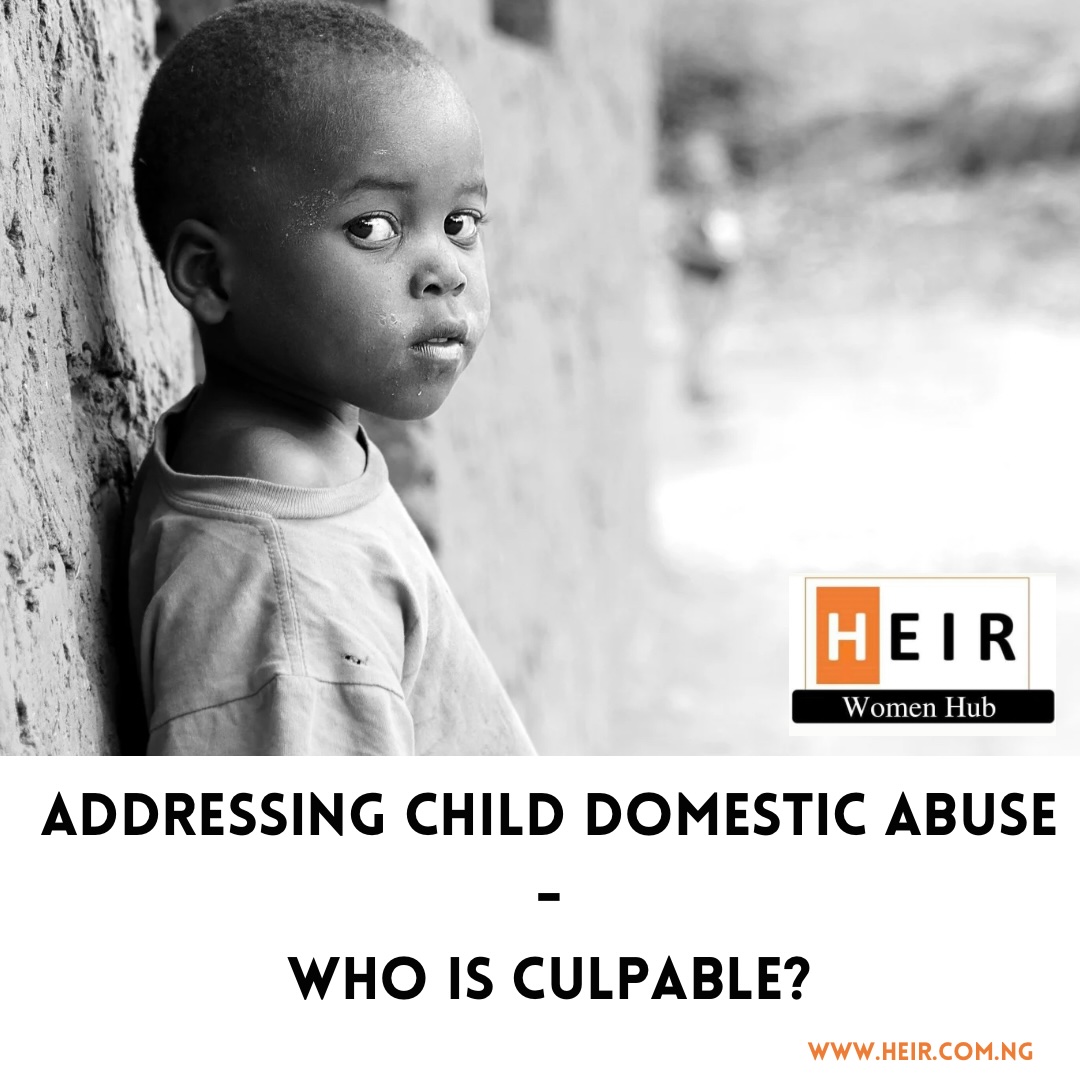
Recent findings have shown that domestic violence and abuse is relative-many members of society, irrespective of gender roles or identity, suffer domestic abuse from women and men. A brief walk through history reveals that the influence of social expectations and masculine norms, to a large extent, normalised the tenets that trigger violence. Some academic schoolers speak to violence being ‘learned’ in the case of military, others allude to the notion that enforcing the social norms of dominance and oppression which is mainly presented as men over women, power dynamics, gender roles, identity categorisation, capitalism and the position of law as a violent institution, greatly enhanced domestic abuse and violence in our society.
There are reports on child domestic abuse, child trafficking that have been carried out by women. While women are majorly written into law as weak, nurturers and non-leaders, the perception that these attributes are gendered is worth a conversation. While domestic violence in the form of intimate partner violence (IPV) has shown that more women are impacted with perpetrators as men, researchers across the globe are increasingly speaking to the role of women in child domestic abuse and trafficking of minors. History and law positioned violence as male centric, and we continue to develop interventions to prevent violence against women and girls, the gap in these spaces is that boys and men are written out of the equation, limiting the access to receive protection from events resulting from domestic violence and abuse.
The National Agency for the Prohibition of Trafficking in Persons (NAPTIP), has made some convictions regarding child abuse perpetrators committed by women. Many households share some lived experiences about how violent some women become over the minors and domestic staff that ‘work’ under their roof. There are trickle reports on women who commit murder, abuse and violence in the media with a reaction that’s seen as ‘strange’. Women are not seen as violent, women are stereotyped to be weak, gentle and nurturing hence the women who become violent are seen as a misnomer.
Children under such circumstances are left to the woman to care for, as women are positioned to be the care givers in households. What we should discuss is that same power dynamics that exists between men and women, exists between women and others. Violence is non-gendered. If this is the theory, we should also question whether women are non-violent?
Attention must be given to situations that enable women in certain households to perpetuate abuse and violence over children. Many stories show that the men in the household of such child abuse victims, do not address the situation as social norms idolises gender roles hence, women are ‘responsible’ for the domestic staff in a household. When domestic abuse of a minor occurs, such as beating, starvation, neglect, verbal abuse, intimidation, women are often alleged to be responsible.
Domestic violence is perpetrated by any gender. These roles are ‘performed’ in any gender identity or category however data still strongly indicates men over women intimate partner violence as the mainstreamed social problems. Violence also covers in-laws abuse, staff abuse, sexual assault and harassment, trafficking and solicitation, pimping, verbal abuse of which emerging data is positing women as victims as well as perpetrators.
It is therefore very critical that the social norms as root causes, be interrogated to dissect institutional framing and social application of interventions we design and implement to end abuse of any form, perpetuated by any gender.
My take is that children should be effectively protected by the State. Violence should be treated as the outcome of core social orientation issues that cause and exarcebate harm triggered by any gender. The conversation on domestic violence has to become nuanced and inclusive to ensure the appropriate measures are designed, developed, employed and implemented for the protection and prevention of all persons in varying abilities.
Añuli Aniebo
